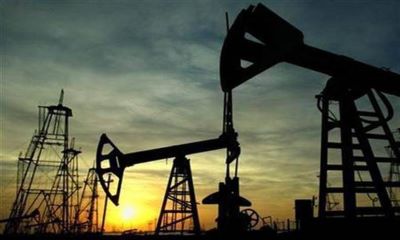The new technologies retrofitted into existing refineries’ configuration and integrated refineries with petrochemical complexes are expected to double the feedstock production in the next two decades

India has set ambitious environmental targets such as bringing down one billion tonnes of CO2 emissions by 2030 and attaining net zero emission up to 2070 however there will be no phasing out of fossil resources but phasing down instead, says Dr. S. S. V. Ramakumar, Director (R&D and P&BD), Indian Oil Corporation speaking at the session on 'Dynamics of Feedstock: Leveraging Synergies of Value Chains between Petroleum and Petrochemicals – A Roadmap from Oil to Chemicals'.
“Petrochemicals contribute to 1.4% of GDP and growth in their demand will also lead to 30-40% increase in demand for crude oil in next 20 years. Since India's per capita consumption of petrochemicals is set to grow, the country will require at least 15 world scale cracker plants. Therefore, there is a need for rigorous indigenisation in this domain be it refinery technologies, petrochemical technologies, catalysts, specialty chemicals or value added chemicals, Indian Oil is aiming for complete indigenisation. Our mantra for development is flexibility as demand might either take an upward swing or go down. We can’t change the refinery configuration every five years as it will be highly Capex intensive. The need of the hour to select flexible technologies and integrate these into the overall refinery configuration. Same hardware we are going to set up today should be flexible enough to switch over from brownfield to greenfield or from liquid products to petrochemical stocks. We have done this at Paradip and the technology we have can switch over as per market dynamics,” says Dr. S. S. V. Ramakumar, Director (R&D and P&BD), Indian Oil Corporation while sharing his view on enhancing naphtha flexibility and petrochemical intensity index of refineries.
"Indian Oil is poised to provide novel technological solutions for enhancing petrochemical intensity and naptha management. Steam crackers play a key role in increasing petrochemical intensity from saturated naphtha streams. Indian Oil’s INDALIN technology is probably one of the best solutions for conversion of cracked naphtha to chemicals at much lower energy intensity and flexibility compared to existing technologies," adds Dr. Ramakumar.
For India to become a petrochemical hub, we will require standalone petrochemical plants and standalone crackers to facilitate more production, says Avinash Verma, Managing Director, ONGC Petro Additions Limited.
"If we need to increase petrochemicals production, only naphtha might not be the solution. A mix feed will be a better alternative in terms of more options besides naphtha. We can also have ethane and propane or LNG. There are projects already on ethane production in India. Though there are no standalone plants on ethane, it remains an interesting prospect. There are sourcing options emerging now but largely dominated by US capacities. To source ethane and develop downstream facilities, the government will have to support the infrastructure system to make imports possible. Infrastructure development schemes will help in making ethylene and propylene available. It will help players to set up tanking storage, jetties etc. to import the feedstock beyond their captive consumption. Incentivisation from the government will build the capacities. Quite likely that this issue of importing feedstock has been under discussion. Ethane looks interesting from an import point of view and PCPIRs could be the destination. Dahej PCPIR has prospects as the Dahej ACZ project in its third phase has been initiated and 600 acre land acquired. It can be used to augment ethane and methane. If more players get into setting up, we can expand further. Indian national oil companies have significant assets abroad and their scope can be expanded for petrochemical feedstock. A decisive step has to be taken in this direction," added Verma.
B. Ashok, CEO, Ratnagiri Refinery and Petrochemicals Limited feels that one of the major hindrances in petrochemical production is the mindset, mostly due to the economics involved to do so.
“For the mindset to change, there has to be enough cooperation between members of industry. While India might afford 15+ world class crackers by 2035 to meet domestic demand, the steps to achieve that have to be accelerated. If we don't, we will have a huge gap. If we need a 5 or 10 trillion economy, we need to have substantial demand for chemicals and petrochemicals. The likely shortfall for petrochemical feedstock is huge. We had the mindset that crude oil was for fuel but now it has to change for petrochemicals. We need integrated refineries to switch as in when there is a demand. Integrated refineries and petrochemical complexes give us feedstock in good quantities. Robust ecosystem with close integration of petrochemical and downstream players is critical to solve the feedstock problem for the domestic chemical sector. All the refinery projects currently have low petrochemical integration, varying from 5% to even 0.1%. The new ones are looking at medium integration which is somewhere between 10-15% by 2030. At the same time, economic costs for establishing integrated refineries are adding to the complexities. Companies need Rs. 3,500 - Rs. 4,000 crore for standalone refinery and Rs. 7,500 - Rs. 8,000 crore for integrated refinery plus petrochemical complexes," added Ashok.
Subscribe to our newsletter & stay updated.